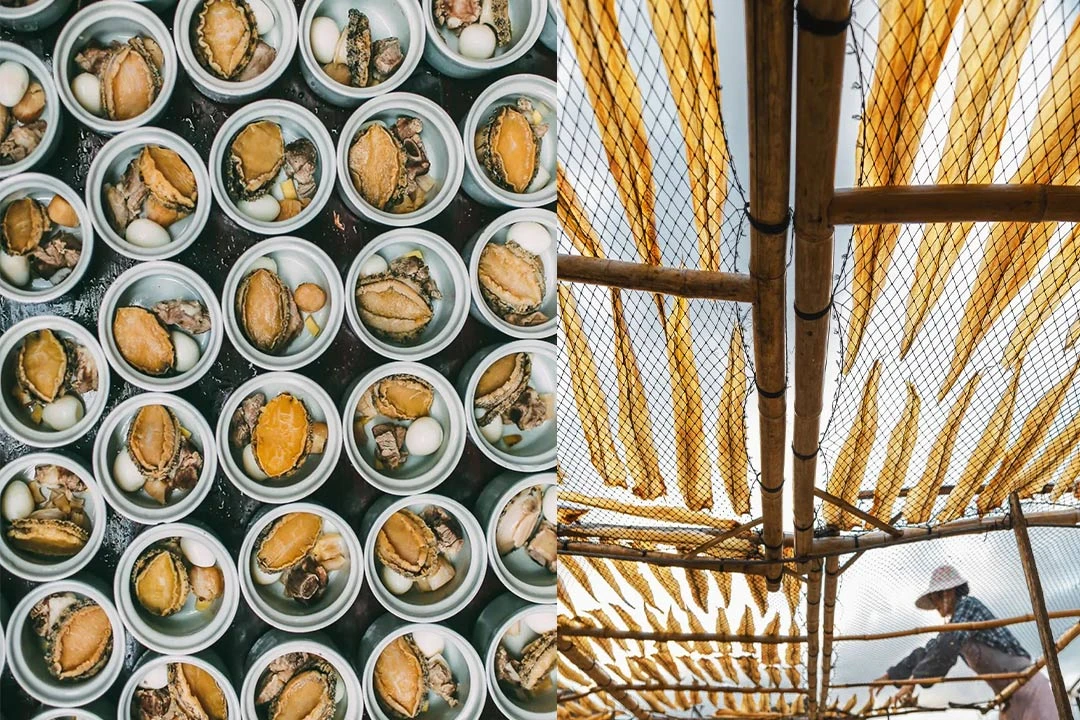Fujian's coastlines have recently opened up, and the anticipation among locals is palpable. After over three months of rest, the region is bracing for a spectacular seafood revival. Crabs, eels, silver pomfret, mantis shrimp, clams, squid, sea snails, razor clams, and green-lipped mussels are set to make their grand reappearance. For the people of Fujian, this marks the arrival of the "first seafood feast of the fall."
Fujian: The Seafood Capital of China
While Fujian may not be the top seafood-producing province in China by volume, it claims an impressive title: it leads the nation in both per capita seafood consumption and production. With a per capita seafood freedom that outpaces other provinces, Fujian stands proudly at the forefront of China's seafood culture.
Fujian's seafood industry is not only significant domestically but also internationally renowned. For a decade, Fujian has topped the list for seafood exports, notably in eel exports, where the province controls over half of the nation's supply. This dominance extends to Japanese cuisine, showcasing Fujian's global influence.
Seafood is so integral to Fujian's culture that locals can manage without meat for days, but never without seafood. The variety and quality of seafood in Fujian are celebrated year-round. In winter, oysters are enjoyed grilled or pan-fried, while in spring, local specialties like anchovies and mussels make their appearance. Summer brings shellfish that soothe the heat, and autumn is marked by the arrival of crabs and large prawns, best enjoyed with soy sauce. Each season offers a unique seafood experience, reflecting the province's deep connection with the ocean.
The Maritime Identity of Fujian
Often referred to as "sea Fujian," the province's identity is deeply intertwined with its maritime heritage. Fujian's geographic characteristics emphasize its maritime nature. The province's coastline stretches over 3,000 kilometers, despite its north-to-south distance being just over 500 kilometers. This extensive coastline provides Fujian with a wealth of natural harbors—125 in total, the highest number in China. The province's coastline is among the most intricate in the country, contributing to its prominence as a seafood hub.
Fujian's approach to marine resources is a testament to its resilience and adaptability. With the least amount of arable land per capita in China, Fujian has turned to the sea to expand its living space, achieving an agricultural renaissance through marine farming. The province's dedication to harnessing the sea's potential is reflected in its rich traditions and advanced fishing techniques.
Historically, Fujian's maritime culture has been linked to Mazu, the sea goddess worshipped by local fishermen and merchants. This cultural legacy has shaped Fujian's sea-centric practices, from ritualistic offerings before setting sail to maintaining traditional fishing methods.
The Rich Tapestry of Fujian's Seafood Regions
Fujian's seafood scene is diverse, with distinct characteristics across its regions. Southern Fujian, including cities like Quanzhou, Xiamen, and Zhangzhou, is renowned for its traditional seafood culture. Zhangzhou's Dongshan County, known as China's top seafood county, thrives on its natural marine resources. Surrounded by the sea, Dongshan Island is a prime location for wild seafood, including the celebrated Dongshan abalone and small squid. This region's seafood is so esteemed that it is often labeled as "authentic Dongshan seafood" in markets.
In Xiamen and Quanzhou, local seafood is integral to the culinary landscape. The unique flavors and textures of these coastal cities have made them famous for dishes like oyster omelets and the distinctive sand tea sauce, which has influenced culinary traditions beyond Fujian.
Northern Fujian: The Seafood Powerhouse
In Northern Fujian, the cities of Fuzhou and Ningde are major players in the seafood industry. Fuzhou's Lianjiang County is notable for its abalone farming, contributing significantly to the country's supply. Ningde, known as the "Home of Big Yellow Croaker," supplies around 80% of China's big yellow croakers. This region also excels in producing eel and seaweed, maintaining its position as a crucial seafood supplier.
The city of Xiapu in Northern Fujian is particularly famous for its expansive mudflat resources, which support a thriving aquaculture industry. The beauty and bounty of Xiapu's coastline, with its vast stretches of tidal flats, have made it a leading producer of seaweed and other marine products.
Fujian's Seafood Culture: A Way of Life
Fujian's relationship with seafood is more than a culinary preference—it's a way of life. The province's diverse seafood offerings span from luxurious banquet dishes like Buddha Jumps Over the Wall to everyday street food like oyster omelets. The unique flavors of Fujian seafood are complemented by local condiments such as sand tea sauce, which has become a staple in Fujian's culinary repertoire and has influenced other regions' cuisines.
The seafood culture in Fujian is also reflected in its local festivals and traditions. The Fish Ball Culture Festival, celebrating the humble fish ball, highlights how integral seafood is to Fujian's cultural identity. Local specialties like clam juice-based soups and fish noodles represent the everyday seafood indulgence that defines Fujian's gastronomy.
Fujian's approach to seafood is characterized by an openness to both traditional and innovative methods. From the simplest street food to elaborate feasts, seafood is deeply embedded in Fujian's culture and daily life. The province's ability to blend the ancient and modern aspects of seafood consumption exemplifies its mastery in achieving "seafood freedom."
In essence, Fujian's dedication to seafood is a reflection of its maritime heritage and cultural pride. The province's remarkable seafood landscape and innovative practices make it a true leader in China's seafood industry, embodying the essence of "sea Fujian" in every aspect of its vibrant, ocean-oriented lifestyle.




